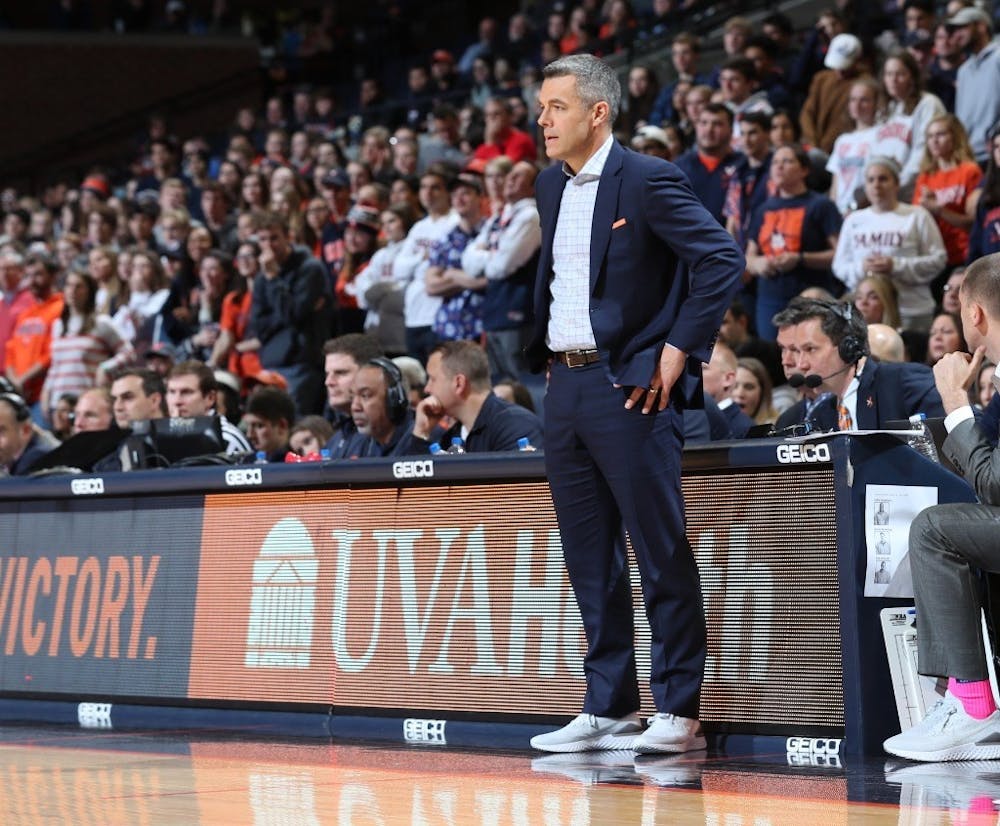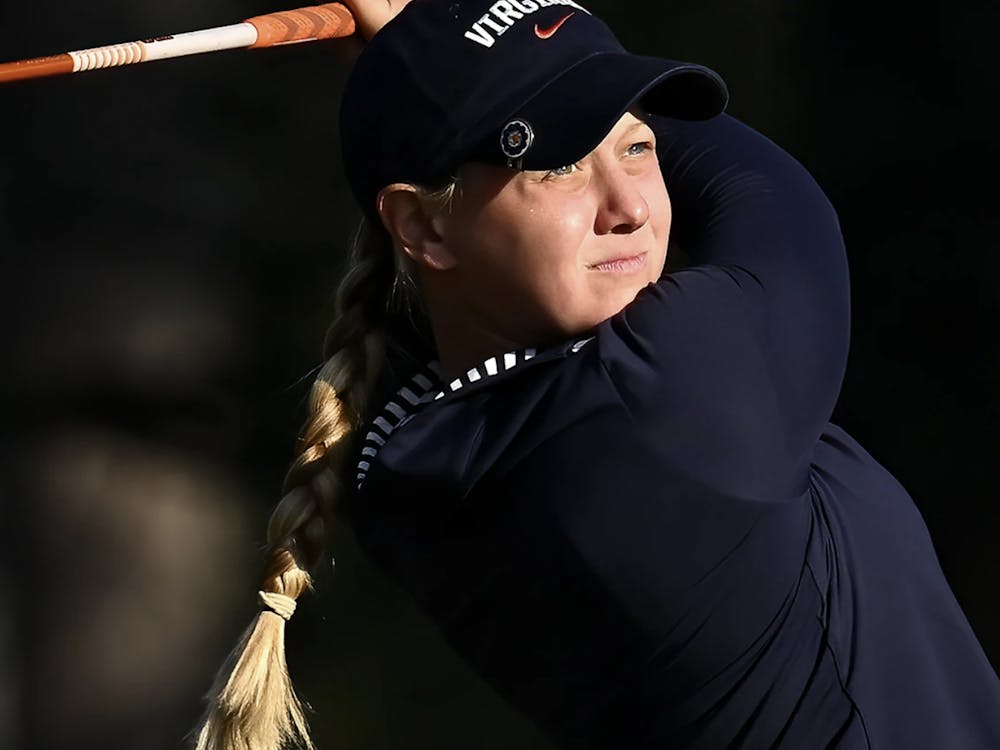Last year, despite a dominant regular season which culminated in a second straight ACC regular season championship, Virginia still had its share of skeptics going into the NCAA Tournament. Many had concerns about whether Virginia’s notoriously slow pace of play would work in the postseason — criticisms which became more prevalent after Virginia’s historic upset loss in the first round of the 2018 NCAA Tournament. However, the Cavaliers went on to silence the doubters and win the first national championship in program history, proving that their playing style can be effective in March.
This season, the unranked Cavaliers (14-6, 6-4 ACC) are no longer the perennial force they were during the 2018-19 season. Virginia’s loss of all three of its leading scorers from the previous season — De’Andre Hunter, Ty Jerome and Kyle Guy — has paralyzed its offense, currently ranked No. 347 in points per game at just 56.3.
In contrast to the majority of recent seasons under Coach Tony Bennett, Virginia will go into multiple games in the final stretch of conference play as the underdog. Currently a bubble team — a team on the fringes of being selected for the tournament — the Cavaliers improved their case with an upset win this past week against then-No. 5 Florida State. They have several matchups against top-ten opponents — two against Louisville and one against Duke — remaining on the schedule, meaning there are more opportunities to bolster their resume before the NCAA Tournament.
If Virginia does return to the NCAA Tournament, the Cavaliers will be a team no top seed will want to face. Just as their slow pace of play makes them vulnerable to upsets, it also gives them the potential to upset higher-ranked teams. In addition, Virginia’s vaunted packline defense forces teams into attempting more three-pointers than usual, and its offense has historically — although less so this year — relied on three-point shooting for success. Together, these factors lead to variability, which increases the chances of an upset.
Down the stretch, especially against Duke and Louisville, Virginia’s probability of winning will be less than 50 percent. As the underdog, the Cavaliers will want to make the outcome as close as possible since Virginia’s style is conducive to pulling off an upset against any opponent.
Pace of play
One of the signature features of Virginia teams under Bennett has been their slow style of play. For the fourth straight season, Virginia ranks dead last in tempo out of the 353 Division I teams. According to Ken Pomeroy’s college basketball ratings, the average number of possessions per 40 minutes this year has been approximately 68, while the Cavaliers average around 59 possessions per game. This is a huge factor in generating upsets. Theoretically, the better team should always win if the game is played long enough. For example, the 2017-18 UMBC basketball team would have a very low chance of beating the 2017-18 Virginia team if the teams played a best-of-seven series. However, UMBC would have practically a 50 percent chance of winning if the two teams were competing to be the first to score a basket. In the 2018 NCAA Tournament, Virginia’s slow pace gave UMBC a better chance of winning, but now it also gives Virginia a better chance of winning as an underdog this season. By reducing the number of possessions in a game and shrinking the sample size, the Cavaliers create more volatility in potential outcomes.
Virginia is not accustomed to being the underdog, especially in recent years. However in the 2016-17 season, during which the Cavaliers frequently came into games as underdogs, they pulled off multiple upsets. Virginia took down No. 4 Louisville and No. 5 North Carolina and came within inches of beating No. 1 Villanova. The current Virginia team can do the same this season.
Three-point shooting
Another way Virginia increases the variability in a game is by shooting and forcing three-point field goal attempts. One team getting hot from beyond the arc or another team going cold can explain March Madness upsets virtually every single year. The per-shot variability of three-point attempts is roughly double that of two-point attempts. This is a key reason for why teams shoot so many three pointers when down, or when underdogs. One of the most famous March Madness upsets ever — No. 11 seed VCU’s victory over No. 1 seed Kansas in the 2011 Elite Eight — perfectly exemplified this phenomenon. Kansas opened as an 11-point favorite, but VCU sunk 12 of 25 shots from three, while Kansas missed 19 of its 21 long-range attempts. VCU ended up winning by 10, becoming the third No. 11 seed ever to make the Final Four.
Even though Virginia is currently one of the worst three-point shooting teams in the country — ranked No. 348 in three-point field goal percentage — the Cavaliers still shoots a substantial amount of three-pointers. Currently 37.3 percent of the Cavaliers’ field goal attempts have been three-point shots, which is comparable to the NCAA D-I average of 37.6 percent. Virgnia’s mover-blocker offense has traditionally relied on stellar three-point shooters like Joe Harris, Malcolm Brogodon and Kyle Guy, and while the Cavaliers have had to adjust slightly this year, their movements still create natural opportunities to score three-pointers. Junior transfer guard Tomas Woldetensae’s three-point shooting has improved significantly recently, and Virginia also has big men this year who can make shots from beyond the arc. Junior forward Mamadi Diakite, for example, is currently shooting 41 percent from the three-point line and went 3-3 in Virginia’s win over Florida State.
Packline defense
On the defensive end, Virginia’s signature packline defense ramps up the variability of a single result even more. The Cavaliers’ defense forces opponents to shoot three-pointers by locking down dribble penetration and easy baskets in the paint. As a result, 44 percent of opponents’ field goal attempts against Virginia have been three-pointers, well above the D-I average. The Cavaliers have also played great three-point defense so far this year, with opponents shooting only 29.4 percent from behind the arc. The sight of frustrated opponents heaving up three-pointers to no avail is all too common for Virginia fans, the sign of the packline at work.
Against NC State, for instance, the Cavaliers held the Wolfpack scoreless for over 10 minutes in the second half. While many teams rely on offensive explosions to pull off upsets, this year’s Virginia team can have the same effect with explosions of stifling defense.
While Virginia’s unique style of play has made them more vulnerable to upsets in past years, this year it should begin to play in the Cavaliers’ favor. Their statement win over Florida State showed that even though this Virginia team is not as talented as last year’s team, they still have the ability to beat any team in the country. While the Cavaliers are currently on the bubble of the NCAA Tournament, Bennett’s team has the tools to propel Virginia to another key upset victory that would solidify its tournament resume. The first potential upset opportunity for the Cavaliers’ is the game against No. 5 Louisville Saturday at the KFC Yum! Center, where Virginia has a history of producing magic.
Before they face the Cardinals, however, the Cavaliers have another important conference game against Clemson Wednesday night at 7 p.m at John Paul Jones arena.







